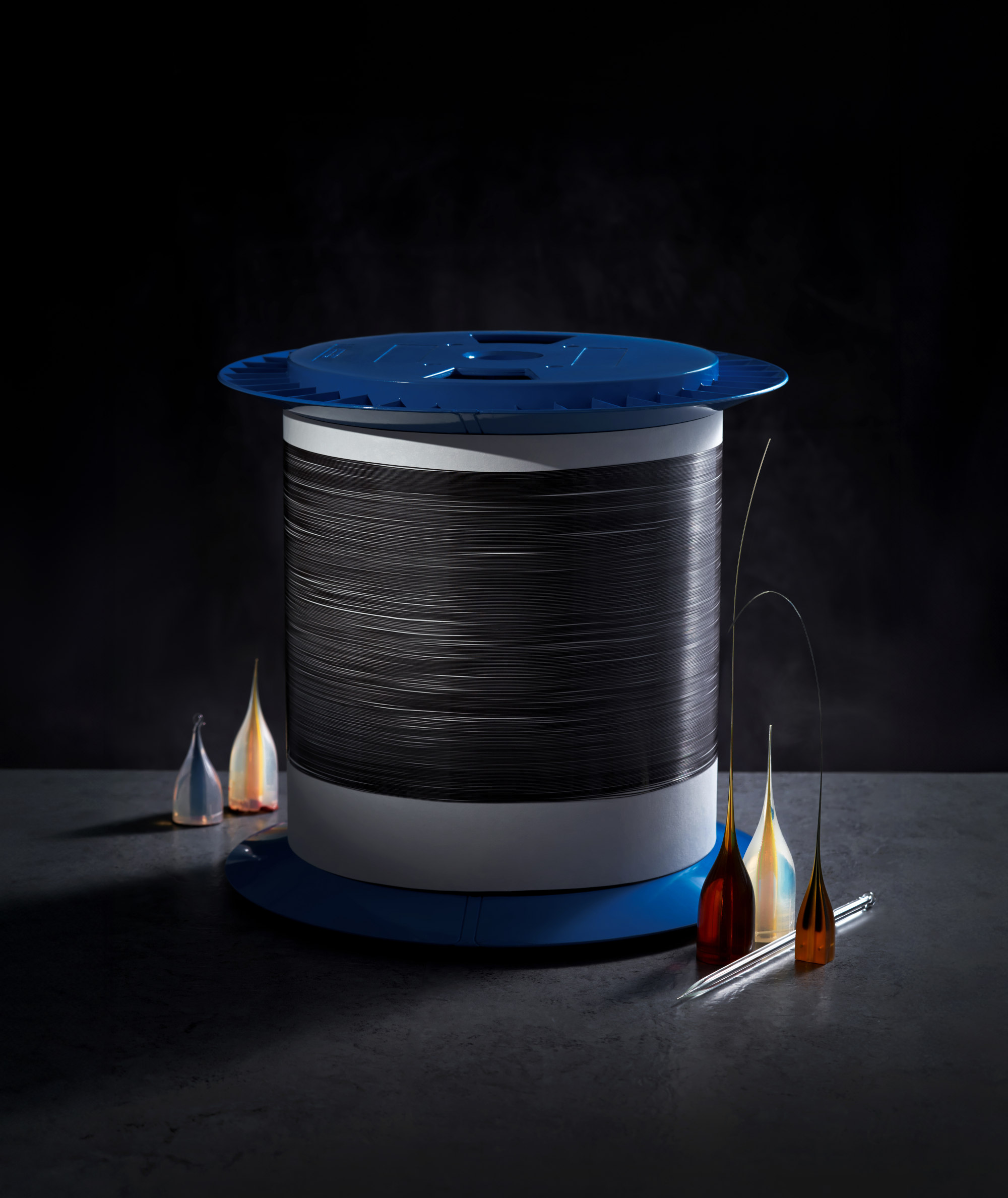
Ultrathin smart fibre created by Singapore, China researchers seen as ‘leap’ forward in wearable tech
- Ultrathin smart fibre can be woven into fabrics to turn everyday outfits into wearable electronics, team behind feat says in Nature article
- Virginia Tech experts not connected with study say invention represents ‘a leap towards embedding microcomputers into everyday clothing’
A jumper interknitted with the new semiconductor fibres as thin as human hair would be able to share pictures with other wearers via a wireless light-based communication system.
A similarly made beanie could help a visually impaired person cross the road safely, by sending traffic signal information to a phone and triggering it to vibrate in line with the changing colours.
What’s more, both the jumper and the beanie would be machine washable.
Again, instead of a smartwatch with rigid hardware, the fibre would let users opt for a flexible watch band to measure heart rate.
And a “smart top” worn to the museum would be able to receive information about exhibits and feed it into an earpiece while the wearer moved around the halls.
All of these possible applications and more were highlighted by the research team from Singapore’s Nanyang Technological University (NTU) and institutes under the Chinese Academy of Sciences in Shenzhen and Suzhou, whose findings were published in the peer-reviewed journal Nature on Thursday.
The fibre can also work deep underwater, the researchers said. In a test, a mini-submarine with fibres glued on to the surface was able to receive commands from a phone for directions.
This comes as scientists worldwide explore ways and new materials to devise comfortable, even imperceptible, next-generation wearable electronics. Future devices and materials should also ideally be highly power-efficient, recyclable and sustainable.
In the latest study, the team developed a technique to create defect-free strands spanning hundreds of metres by embedding synthetic fibres with semiconductor materials.

To do this, a semiconductor wire is first inserted into a glass tube, which is then heated until the wire is soft enough to be pulled into a thin strand. Once the strand cools, the glass is removed.
Next, the semiconductor strand is put into a polymer tube together with metal wires. That is then heated and stretched to make a thin, flexible thread.
Lead author Wei Lei, an associate professor and the director of the Centre for Optical Fibre Technology at NTU, said while the polymer cladding could feel like a fishing line, the functional fibre would make up less than 5 per cent of the total surface area of the fabric to ensure user comfort.
“This way users would feel as if they were wearing a cotton garment. In areas connected to health monitoring, like the heart or the wrists, more fibre could be added [for its sensory function],” Wei said.
He also said the manufacturing process was compatible with machines widely used by the textile industry.
The team will continue its research to turn other electronic components such as batteries into threadlike shapes, so that they can make up a complete system of smart textiles.
“We are also working on displays enabled by light-emitting fibres. The content can then be shown on, say the arm, of the shirt,” Wei said.
“Our long-term goal is to have a fibre battery to power fibre sensors, with display and computing as further functions. Simple computing functions within a wearable device can make sure it only transmits data that is required, thereby reducing power consumption.”
China’s latest wearable tech is an air-conditioned hazmat suit
In an accompanying expert commentary article, two scientists from Virginia Tech in the United States said the team’s work represented “a leap towards embedding microcomputers into everyday clothing”.
“Because the wires embedded in [the new] fibres are easily connected to existing computer hardware, this technology could prove useful in efforts to develop integrated human-machine systems,” the scientists, who were not involved in the study, wrote.
“The work therefore allows us to imagine a generation of smart fibres and fabrics that enable individuals to engage seamlessly with their surroundings – and make their everyday experiences fully immersive.”

